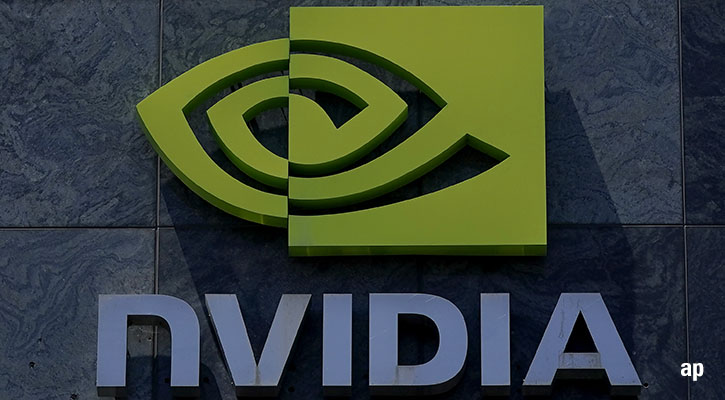
Nvidia NVDA is set to release its fourth-quarter earnings report on Feb. 26. Here’s Morningstar’s take on what to look for in Nvidia’s earnings and stock.
Key Morningstar Metrics for Nvidia
- Fair Value Estimate: $130.00
- Morningstar Rating: ★★★
- Economic Moat: Wide
- Morningstar Uncertainty Rating: Very High
Earnings Release Date
- Wednesday, Feb. 26, after the close of trading
What to Watch for in Nvidia’s Q4 Earnings
All eyes remain on the data center business: Nvidia has been on a healthy streak of reporting results ahead of its quarterly guidance while guiding for the upcoming quarter ahead of FactSet consensus estimates. That said, last quarter’s “beat” was less impressive than those of prior quarters. This is leading to modest concern about a slowdown in AI spending.
- We’ve heard from Nvidia’s key customers that they will significantly raise capex in 2025 (perhaps to the tune of 30%-35% growth), and we continue to expect Nvidia to capture about a third of such spending.
- Sovereign AI spending may also be a modest concern, in light of US regulations and a restrictive geopolitical AI landscape.
- Like prior quarters, supply constraints still appear to be the most significant cap on Nvidia’s AI chip business. Our model assumes Nvidia will sell everything it can build for the next 6-12 months.
Longer-term data center debates persist: Some observers have debated the longevity of scaling laws (the pre-training of AI models based on throwing ever-growing GPU clusters at the problem). Hyperscaler capex suggests these clusters are still being built, and the Stargate announcement may have put this debate to rest in 2025 (although we’re skeptical that all $500 billion will be invested).
DeepSeek also appears to be a game changer on the AI model front, as it was trained within China, which has less access to cutting-edge GPUs, and appears to run AI inference very efficiently. This poses the threat that fewer AI GPUs, large data centers, and nuclear power stations will need to be built.
Again, hyperscaler capex suggests heavy investments are still in the cards in the near-to-medium term, which bodes well for Nvidia. However, slimmer AI models were always part of the equation, in our view, and DeepSeek’s arrival doesn’t change our thesis for Nvidia.
We still have key questions about the future of AI:
- What percentage of AI workloads is training vs. inference? Nvidia dominates training but has said that 40% of its GPUs are used for inference.
- What is Nvidia seeing regarding the development of large language models in the cloud vs. at the edge?
- What is Nvidia seeing from customers conducting “moonshot” projects, such as genetics, drug discovery, robotics, or autonomous driving?
All these items will inform our estimates for future data center revenue growth, and in turn free cash flow generation and our fair value estimate.
Nvidia Stock Price
undefined
Fair Value Estimate for Nvidia
With its 3-star rating, we believe Nvidia’s stock is fairly valued compared with our long-term fair value estimate of $130 per share, which implies an equity value of roughly $3.2 trillion. Our fair value estimate implies a fiscal 2025 (ending January 2025, or effectively calendar 2024) price/adjusted earnings multiple of 44 times and a fiscal 2026 forward price/adjusted earnings multiple of 30 times.
Our fair value estimate, and Nvidia’s stock price, will be driven by its prospects in the data center, or DC, and AI GPUs, for better or worse. Nvidia’s DC business has achieved exponential growth already, rising from $3 billion in fiscal 2020 to $15 billion in fiscal 2023 and more than tripling thereafter to $47.5 billion in fiscal 2024. DC revenue remains supply-constrained and near-term revenue will rise as more supply comes online. Based on Nvidia’s strong results in fiscal 2025 to date, we model DC revenue rising 141% to $114 billion in fiscal 2025. We model 55% growth in fiscal 2026 to $177 billion, 20% growth to $213 billion in fiscal 2027, and 13% growth to $240 billion in fiscal 2028, resulting in a 23% CAGR for the three years thereafter. The main driver of this growth is an ongoing increase in capital expenditures in data centers at leading enterprise and cloud computing customers. We think it is reasonable that Nvidia may face an inventory correction or a pause in AI demand at some point in the medium term thereafter, so we model only 5% growth in fiscal 2029. Excluding this one-year blip that we model, we anticipate an average annual DC growth of 10% thereafter and consider this a reasonable long-term growth rate as AI matures.
Read more about Nvidia’s fair value estimate.
Nvidia Stock vs. Morningstar Fair Value Estimate
undefined
Economic Moat Rating
We assign Nvidia a wide moat, thanks to intangible assets around its graphics processing units and, increasingly, switching costs around its proprietary software, such as its Cuda platform for AI tools, which lets developers use the firm’s GPUs to build AI models.
Nvidia was an early leader and designer of GPUs, originally developed to offload graphic processing tasks on PCs and gaming consoles. The firm has emerged as the clear market share leader in discrete GPUs (over 80% share, per Mercury Research). We attribute this leadership to intangible assets associated with GPU design, as well as the associated software, frameworks, and tools developers need to work with these GPUs. In our view, recent introductions like ray-tracing technology and the use of AI tensor cores in gaming applications are signs Nvidia has not lost its GPU leadership. A quick scan of GPU pricing in gaming and DC shows the firm’s average selling prices can often be twice as high as its closest competitor, Advanced Micro Devices AMD.
Read more about Nvidia’s economic moat.
Financial Strength
Nvidia is in outstanding financial health. As of October 2024, the company held $38.5 billion in cash and investments, compared with $8.5 billion in short-term and long-term debt. Semiconductor firms tend to hold large cash balances to help them navigate the cycles of the chip industry. During downturns, this provides a cushion and flexibility to continue investing in research and development, which is necessary to maintain their competitive and technology positions. Nvidia’s dividend is virtually immaterial relative to its financial health and forward prospects, and most of the firm’s distribution to shareholders comes in the form of stock buybacks.
Read more about Nvidia’s financial strength.
Risk and Uncertainty
We assign Nvidia with a Morningstar Uncertainty Rating of Very High. In our view, Nvidia’s valuation will be tied to its ability to grow within the data center and AI sectors, for better or worse. Nvidia is an industry leader in GPUs used in AI model training, while carving out a good portion of demand for chips used in AI inference workloads (which involves running a model to make a prediction or output).
We see a host of tech leaders vying for Nvidia’s leading AI position. We think it is inevitable that leading hyperscale vendors, such as Amazon’s AWS, Microsoft, Google, and Meta Platforms will seek to reduce their reliance on Nvidia and diversify their semiconductor and software supplier base, including the development of in-house solutions. Google’s TPUs and Amazon’s Trainium and Inferentia chips were designed with AI workloads in mind, while Microsoft and Meta have announced semiconductor design plans. Among existing semis vendors, AMD is quickly expanding its GPU lineup to serve these cloud leaders. Intel also has AI accelerator products today and will likely remain focused on this opportunity.
Read more about Nvidia’s risk and uncertainty.
NVDA Bulls Say
- Nvidia’s GPUs offer industry-leading parallel processing, which was historically needed in PC gaming applications, but has expanded into crypto mining, AI, and perhaps future applications too.
- Nvidia’s data center GPUs and Cuda software platform have established the company as the dominant vendor for AI model training, which is a use case that should rise exponentially in the years ahead.
- Nvidia is expanding nicely within AI, not just supplying industry-leading GPUs but also moving into networking, software, and services.
NVDA Bears Say
- Nvidia is a leading AI chip vendor today, but other powerful chipmakers and tech titans are focused on in-house chip development.
- Although Cuda is a leader in AI training software and tools today, leading cloud vendors would likely prefer to see greater competition in this space and may shift to alternative open-source tools if they were to arise.
- Nvidia’s gaming GPU business has often seen boom-or-bust cycles based on PC demand and, more recently, cryptocurrency mining.
This article was compiled by Gautami Thombare.
The author or authors do not own shares in any securities mentioned in this article. Find out about Morningstar's editorial policies.





























